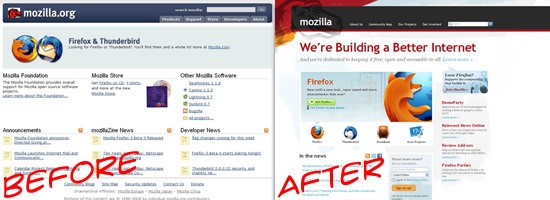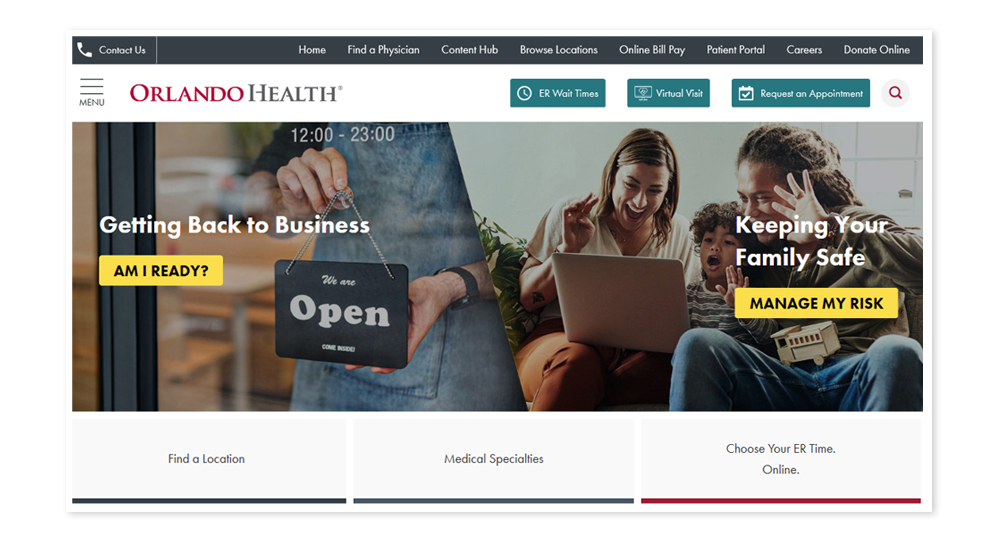
A tester must be able to identify the key points when testing responsiveness. They must also be able test the website on different devices and at different breakpoints. Developer and tester must collaborate to create a thorough test. They must work together to create conditions that are different from the original and test them for different browser sizes and resolutions. A tester should check if the content on the web page is readable at all resolutions. This means that the content should not be affected when the browser is resized.
UIlicious
UIlicious automates web-application UI testing. No programming knowledge is required. Any browser can be used to perform tests. You can schedule tests and track the results. Additionally, you can share bug reports with issue trackers to get bug fixes. The tool is fully functional in minutes and has a 14-day trial period. Learn more about UIlicious to discover its many benefits.
UIlicious lets you test responsive designs on real devices, and then compare the results. UIlicious allows you to test responsiveness on a variety screen sizes and resolutions. UIlicious will also take screenshots of your website on all the various screens. After creating a test account, you will have access to UIlicious support forums and guides.

Applitools
Applitools are a great tool to validate the responsiveness of mobile apps or websites. Applitools can be used to cross-platform test and integrate seamlessly with your existing framework and test automation language. These tests cover all pages of an application and are very comprehensive. Applitools works with all major programming languages. Users can even set the software to snooze after each run to save time.
Applitools has over 400 UI components. They integrate seamlessly with your existing testing system, making it easy for you to run hundreds and thousands of tests in just minutes. Applitools can be used with any of your favorite open-source or proprietary development tools, as well as cloud-based testing platforms. Applitools is also available as collaboration software. This allows you to work with your team and maintain the integrity of your code while working on your testing projects.
Responsinator
To determine the screen sizes that will be used to measure the responsiveness and usability of your website, it is necessary to first know the screen sizes. You have a variety of tools to help you do this. Responsinator lets you see your website in different screen sizes, and can even take screenshots to use as mockups. Cross Browser Testing also allows you to evaluate the responsiveness your website and compare screenshots from older versions. Google Resizer can also be used for this purpose.
Another tool for testing responsiveness of website is Screenfly. Screenfly lets you test a website across different devices, such as smartphones and tablets. It also tests older devices such as TVs and computers. Screenfly is free, but it requires manual testing. Screenfly, unlike Responsinator does not display true-mobile versions. It is however a great tool to test responsiveness during the development process.

WillowTree
When you want to ensure that your website is working correctly on every device, you should use a responsive website testing service like WillowTree. A variety of features can be customized for different screen sizes such as mobile, tablet and television. The company's staff includes software engineers, mobile strategists and designers with different specialties. The final result is a website which is easy to use on any size screen.
A mobile app testing company should also have the ability to check your website for accessibility. WillowTree also offers cloud-only options. These include an improved user experience with the native JSU Automation Suite software and advanced permission schemes. It is also integrated with Jira Service Management Cloud which is used throughout the company to provide customer service. The company also has a service desk that supports IT and HR departments.
FAQ
How do I design a website.
The first step is to understand what you want your site to do for your customers. What are they looking for when they visit your site?
What issues might they be facing if they can't locate what they're looking at on your site.
You now need to know how to fix the problems. Also, you need to ensure that your website looks professional. It should be easy to use and navigate.
You should have a well-designed website. It shouldn't take too much time for it to load. If it takes too long, people may not be able to stay as long. They'll leave and go elsewhere.
If you're going to build an eCommerce site, you need to think about where all your products are located. Do they all reside in one spot? Are they all in one place?
Decide whether you plan to sell one product at a time or several products. Do you prefer to sell one type of product, or several types?
You can start building your site when you've decided on these questions.
Now you need to worry about the technical side of things. How will your site work? It will it work fast enough? Are people able to get it done quickly from their computers?
Will it be possible to buy something online without paying any extra? Do they need to register with you before they can purchase anything?
These are essential questions that you need to ask yourself. These questions will help you to make the right decisions and move forward.
What is a static site?
A static website contains all content stored on a server that visitors can access via web browsers.
The term "static", refers to the absence or modification of images, video, animations, and so forth.
This site was originally intended for corporate intranets. However it has since been adopted and modified by small businesses and individuals who require simple websites without complex programming.
Because they are less maintenance-intensive, static sites have gained popularity. They are much easier to maintain than fully-featured sites with many components (such a blog).
They also load more quickly than dynamic counterparts. They are ideal for mobile users and those with slow Internet connections.
Static websites are also more secure than dynamic ones. It is difficult to hack into static websites. Hackers only have access the data in a database.
Two main methods can be used to create a static site:
-
Using a Content Management System (CMS)
-
Creating a Static HTML Website
The best one for you will depend on your specific needs. If you're new to creating websites, I recommend using a CMS.
Why? It gives you full control of your website. A CMS means that you don't have to hire someone to set up your website. You just need to upload files to your web server.
You can still learn to code and make a static website. But you'll need to invest some time learning how to program.
How much do web developers make?
A website is a project you can work on for your own money. You'll likely make $60-$80 an hr. Independent contractors are a better option if your goal is to charge more. You could potentially charge anywhere from $150-200 per hour.
What is the best platform for creating a website design?
The best platform for designing a website is WordPress. It comes with all the tools you need for creating a professional website.
Themes are easy-to-install and customizable. You can choose from thousands of free themes available online.
You can also add functionality by installing plugins that allow you to do everything from adding social media buttons to adding forms and contact pages.
WordPress is very easy to use. You don’t need to know HTML code to edit your theme files. All you need to do is click on an icon and select what you want to change.
Although there are many platforms out there, I prefer WordPress. It's been around since the beginning and is still being used by millions of people worldwide.
How can I make a website for free?
It all depends on which type of website it is. Are you looking to sell products, build a website, or create a portfolio online?
An essential website can be created using HTML and CSS. This is a combination of HyperText Markup Language (HTML) and CascadingStyle Sheets (CSS). You can create a simple website with HTML and CSS. But most web developers recommend using a WYSIWYG editor (such as Dreamweaver, Frontpage).
You might consider hiring a freelance designer if you don’t know how to design websites. They can help you create a custom website based on your needs.
Freelance developers can charge either an hourly or a flat fee. It depends on the amount of work that they do in a given time frame.
For example, companies may charge 50-100 dollars an hour. For larger projects, rates are usually higher.
Many freelance websites also list open jobs. You can also search on those websites before you reach out to developers.
Statistics
- Did you know videos can boost organic search traffic to your website by 157%? (wix.com)
- Studies show that 77% of satisfied customers will recommend your business or service to a friend after having a positive experience. (wix.com)
- It's estimated that in 2022, over 2.14 billion people will purchase goods and services online. (wix.com)
- In fact, according to Color Matters, a signature color can boost brand recognition by 80%. There's a lot of psychology behind people's perception of color, so it's important to understand how it's used with your industry. (websitebuilderexpert.com)
- When choosing your website color scheme, a general rule is to limit yourself to three shades: one primary color (60% of the mix), one secondary color (30%), and one accent color (10%). (wix.com)
External Links
How To
What is website hosting?
Website hosting is the place where visitors go to visit a website. There are two types.
-
Shared hosting – This is the most affordable option. Your website files reside on a server controlled by someone else. Customers visit your website and send their requests over the Internet to this server. The owner of the server then hands off the request to you.
-
Dedicated Hosting - This option is the most costly. Your website is only accessible from one server. No other websites share space on the server, so your traffic stays private.
Shared hosting is preferred by most businesses because it's cheaper than dedicated hosting. Shared hosting allows you to have your website run by the company who owns the server.
There are pros and disadvantages to each option. These are some of the major differences between them.
The pros of shared hosting:
-
Lower Cost
-
Easy to Setup
-
Frequent Updates
-
It can be found on many web hosting companies
Shared hosting can often cost as little as $10/month. Keep in mind, however, that bandwidth is usually included in the price. Bandwidth refers the data that you can transfer over the Internet. Even if you are only uploading photos to your blog site, high data transfer rates can still cost you extra.
Once you start, you'll quickly realize why you were paying so much for your previous host. Many shared hosts offer very little customer support. Although their techs may help you with setting up your site, it's not a common practice.
Look for a provider who offers 24/7 phone support. They will assist you with any problems that may arise while you're sleeping.
Dedicated Hosting Cons:
-
More Expensive
-
Less common
-
Requires special skills
With dedicated hosting, all you need to maintain your website are provided. You don't need to worry about bandwidth usage or RAM (random access memory).
This means you will need to spend more upfront. However, once your business goes online, you'll discover that you don’t need as much technical support. You'll soon be an expert at managing servers.
Which Is Better For My Business, So Which Is Better?
The answer to this question depends on which type of website you wish to create. If you are selling products, shared hosting may be the best option. It is easy to set-up and manage. A server shared with several other sites means that you will receive frequent updates.
However, dedicated hosting is the way to go if you want to build a community around your brand. You can put your efforts into building your brand, and not worry about how to handle your traffic.
Bluehost.com is the best web host for both. Bluehost.com offers unlimited monthly data transfers, 24/7 customer support, domain registrations free of charge, and a 30-day guarantee for your money back.